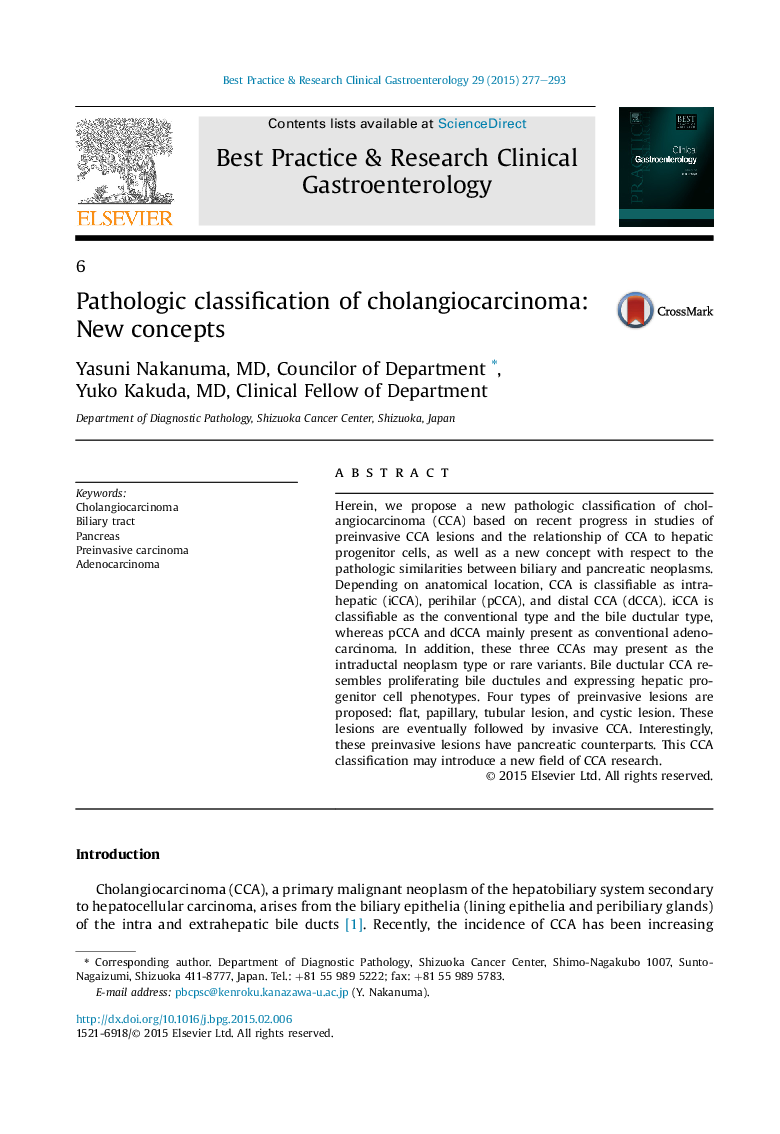| Article ID | Journal | Published Year | Pages | File Type |
|---|---|---|---|---|
| 3254326 | Best Practice & Research Clinical Gastroenterology | 2015 | 17 Pages |
Herein, we propose a new pathologic classification of cholangiocarcinoma (CCA) based on recent progress in studies of preinvasive CCA lesions and the relationship of CCA to hepatic progenitor cells, as well as a new concept with respect to the pathologic similarities between biliary and pancreatic neoplasms. Depending on anatomical location, CCA is classifiable as intrahepatic (iCCA), perihilar (pCCA), and distal CCA (dCCA). iCCA is classifiable as the conventional type and the bile ductular type, whereas pCCA and dCCA mainly present as conventional adenocarcinoma. In addition, these three CCAs may present as the intraductal neoplasm type or rare variants. Bile ductular CCA resembles proliferating bile ductules and expressing hepatic progenitor cell phenotypes. Four types of preinvasive lesions are proposed: flat, papillary, tubular lesion, and cystic lesion. These lesions are eventually followed by invasive CCA. Interestingly, these preinvasive lesions have pancreatic counterparts. This CCA classification may introduce a new field of CCA research.
